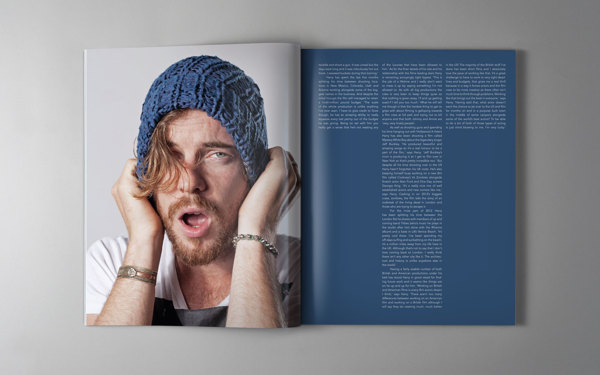6.
My Comments:
The typography before was a little plain and boring. I spread out the letters in the title 'Wojceich'. I was trying to achieve a triangular formation and also when I do so, the typography seemed to form the letter 'W'.
Inspired by this:
Added the letter 'T' from my masthead to the page numbers to show continuity of the pages of the magazine. However, it was too big, the photo covered most of the letter.
7.
My Comments:
Edited the text below the title. Made it flow better. Instead of just starting with S.A.F.E. Heaven, which no one has a clue about.
8.
My Comments:
Thought the text was a little wordy so I edited the first part out.
9.
My Comments:
Put the original text back, because the triangle shape of the letters that I was trying to achieve wasn't successful with lesser words. Added a quote to the photo to make the photograph of hm using the camera link to the music interview. However, the page overall looked too wordy. The quote seemed out of place.
10.
My Comments:
I felt that since the photo was a little out, I removed it. The page became boring, I need something to 'pop'. So I changed the 'W' to neon yellow.
11.
My Comments:
Added a little inverted triangle to hold the text together.

























